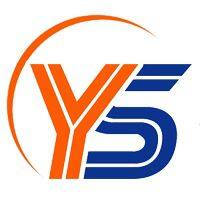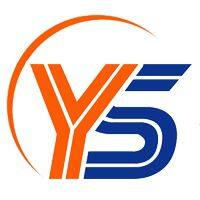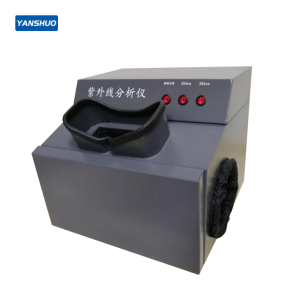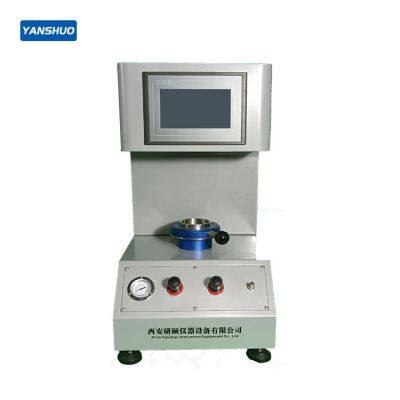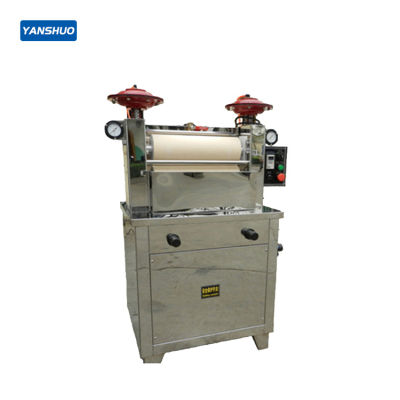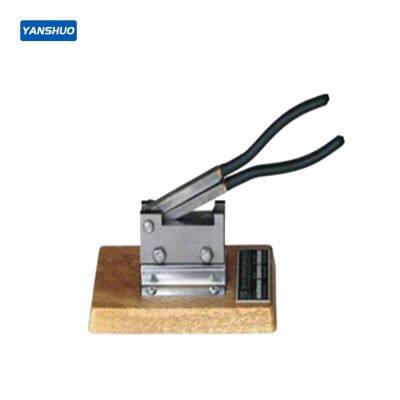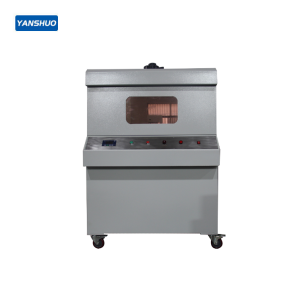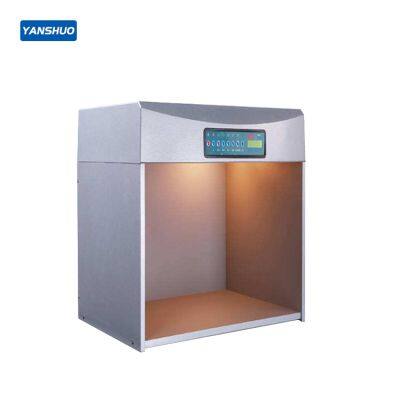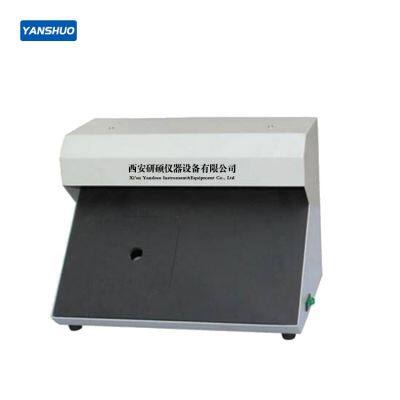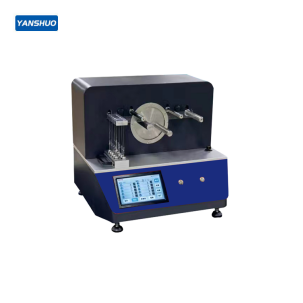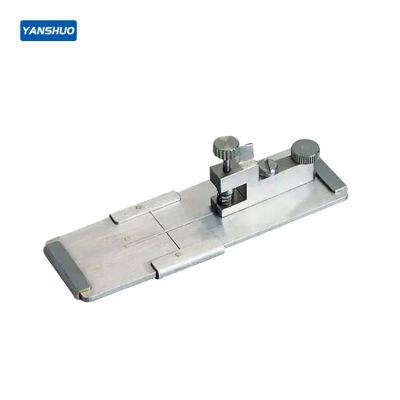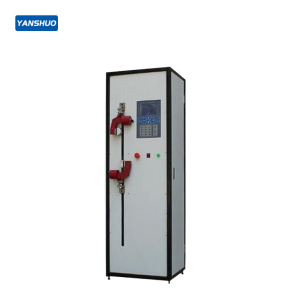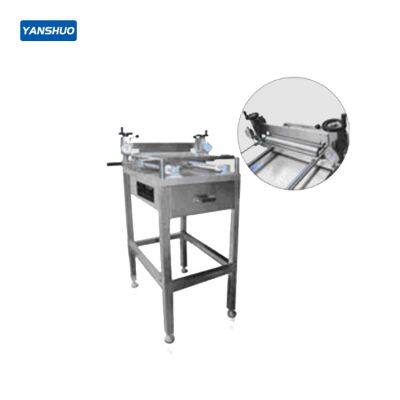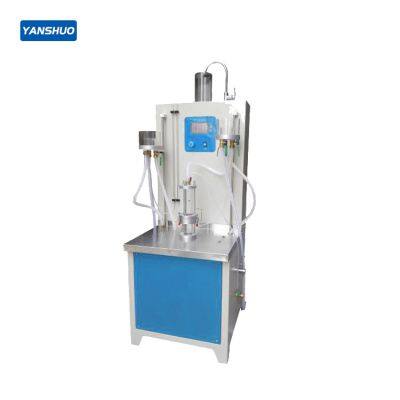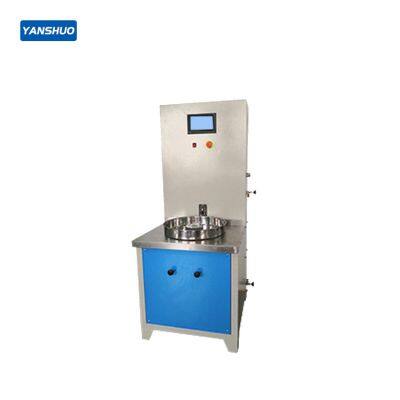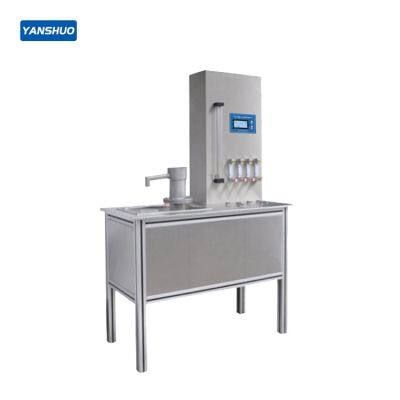Domestic vs. Imported Electronic Tensile Testing Machines: Performance Comparison and Cost-Effective
1. Brand Comparison: Technological Heritage and Market Landscape
Imported Brands: Examples include Instron, MTS, and Zwick/Roell, which have long dominated the high-end market with a rich history and deep technological heritage. Their products are known for high precision and stability, particularly excelling in fields such as aerospace and cutting-edge scientific research. However, prices are generally high, often two times or more than those of domestic equipment.
Domestic Brands: Examples include Kezhun, MTS (China), and Sansi, which have developed rapidly in recent years. Through technology introduction and independent innovation, their products now meet the testing needs of most industrial fields (such as rubber and plastics, metal wires, textiles, and apparel) in terms of accuracy, stability, and functionality. Their greatest advantages lie in high cost-effectiveness and localized service.
2. Core Performance Comparison: Key Indicators Tell the Truth
The core performance indicators for evaluating electronic tensile testing machines mainly include force measurement accuracy, displacement control accuracy, speed control accuracy, and data sampling rate.
Performance Indicator | High-End Imported Brands (e.g., Instron) | Excellent Domestic Brands (e.g., Kezhun, Sansi) | Commentary |
Force Measurement Accuracy | ≤±0.5% of Reading (or even higher) | ≤±0.5% of Reading (mainstream models) | Excellent domestic brands have caught up with imported brands in core indicators. |
Displacement Accuracy | ≤±0.5% of Reading | ≤±0.5% of Reading | Same as above. |
Data Sampling Rate | Very high (up to 5000Hz or more), capable of capturing extremely transient force changes | High (typically around 1000Hz), fully meeting most material testing requirements | Imported equipment still holds an advantage in extreme high-frequency testing scenarios, but domestic sampling rates are more than sufficient for 99% of applications. |
Software Features | Extremely rich functionality, high customizability, compliant with various complex global standards | Comprehensive features, user interface more aligned with domestic habits, pre-installed with GB/T and other domestic standards, easy to use | Imported software is more "powerful," while domestic software is more "user-friendly." |
Conclusion: In the field of general testing, the performance gap between high-end domestic models and mid-range imported models is almost negligible. The advantages of imported equipment are more evident in extreme testing conditions and high-frequency dynamic testing scenarios.
3. Certification and Compliance: CE and GB/T 16825
CE Certification: This is a mandatory safety certification for products entering the European Union market. Mainstream imported brands naturally possess it. It is worth noting that many excellent domestic brands have also obtained CE certification, indicating that their products meet international standards in safety and environmental protection and are qualified for export to the EU, which is strong proof of their reliability.
GB/T 16825: This is the Chinese national standard for "Verification of Static Uniaxial Testing Machines." Whether domestic or imported, equipment sold and used in the Chinese market should comply with this standard for verification and calibration. Domestic brands generally excel in compliance with this standard. Their software comes pre-installed with calculation and report templates required by the standard, and the verification process is more convenient. Imported equipment may require additional configurations or software packages to fully adapt.
4. After-Sales Response and Service Costs: Clear Advantages of Localization
This is the most disruptive advantage of domestic equipment.
Response Speed: Domestic manufacturers typically provide on-site engineer support within 24-48 hours. In contrast, the after-sales process for imported brands is relatively longer, and if original factory engineer support is required, the response time may extend to weeks.
Service Costs: Maintenance costs and parts replacement costs for domestic equipment after the warranty period are far lower than those for imported brands. The prices of parts and engineer labor costs for imported equipment are exceptionally high.
Technical Communication: There are no language or cultural barriers, resulting in high communication efficiency, faster feedback on requirements, and quicker software updates.
5. Cost-Effectiveness Analysis: How to Choose in 2024?
Dimension | Imported Electronic Tensile Testing Machines | Domestic Electronic Tensile Testing Machines |
Procurement Cost | High (budget typically starts at ¥200,000 RMB or more) | Low (budget for similar configuration may range from ¥80,000 to ¥150,000 RMB) |
Performance | Very high, suitable for all scenarios, including top-tier scientific research | High, suitable for 95% or more industrial and research scenarios |
After-Sales Service | Long process, high costs | Fast response, low costs (core advantage) |
Certification Compliance | Comprehensive, but GB/T compatibility needs confirmation | CE/CMA comprehensive, better GB/T compatibility |
Software Experience | Powerful but complex functionality | Aligned with domestic user habits, easy to use |
Final Recommendations
Choose Imported Brands When:
The budget is sufficient, and there are extremely demanding performance requirements (e.g., ultra-high frequency, ultra-large range, special environmental simulation).
The institution is a top international research organization or multinational company where brand recognition is a rigid requirement.
Testing standards are primarily based on international standards such as ASTM and ISO.
Choose Domestic Brands When:
Pursuing high cost-effectiveness, aiming to obtain the best configuration with a limited budget.
Testing applications focus on general material mechanical property tests (tensile, compression, bending, peeling, etc.).
After-sales response speed and service costs are critical considerations, and fast, economical technical support is desired.
Compliance with domestic standards such as GB and YB is primary, and out-of-the-box readiness and seamless integration are expected.
Recently Posted
-
Why do disposable diapers need to be tested with professional testing instruments?
August 23, 2025I. Limitations of subjective assessment1.1 Uncontrollable factors in manual testingTraditional manual testing methods have many limitations:Inconsistent testing conditions: The temperature, volume, and pouring speed of the liquid are difficult to standardize in each test.Subjective result judgment: Different personnel have different judgment criteria.Difficult to quantify data: It is impossible to provide precise numerical evRead More -
From Beginner to Expert: Daily Calibration and Error Compensation Techniques for Electronic Universa
August 21, 2025I. Why is Calibration So Important? The Chain Reaction of Errors:A 0.5% force value error can lead to a >20% deviation in fatigue life prediction (ASTM E739 data).Case Study: A spring factory failed to calibrate promptly, resulting in a batch of products exceeding stiffness standards and incurring losses of ¥800,000.Mandatory Standards:ISO 7500-1 stipulates: Class 1 equipment requiresRead More -
Electronic Tensile Tester Selection Guide: 5 Easily Overlooked Key Parameters
August 20, 2025I. Range Selection: Bigger Isn't Always BetterGolden Ratio Principle:Routine test forces should fall within 10%-90% of the range (ASTM E4 requirement)Case: A testing lab purchased a 100kN machine for 5N wire tests, resulting in ±8% error (3x over-limit)Multi-Range Solutions:Test TypeRecommended RangeAccuracy RangeTextile fibers0.5-500N±0.5%Automotive wires1-10kN±0.8%Metal materials10-300kN±1.0%Smart Sensor Tech:Zwick RoelRead More -
New Energy Vehicle Wire Harness Testing: Precise Force Control with Electronic Tensile Testers in Hi
August 19, 2025I. Why High-Temperature Testing is Critical for NEV Wire Harnesses?Demanding Operational Conditions:Motor compartment temperatures can exceed 150°C Fast-charging currents cause wire temperature rise ΔT≥80°C (SAE J1128 requirement)Failure Risks:Failure ModeConsequenceIndustry CaseInsulation softeningShort-circuit ignition2023 recall due to wire harness meltingConductor creepContact resistance +30%5% charging efficiency loRead More

